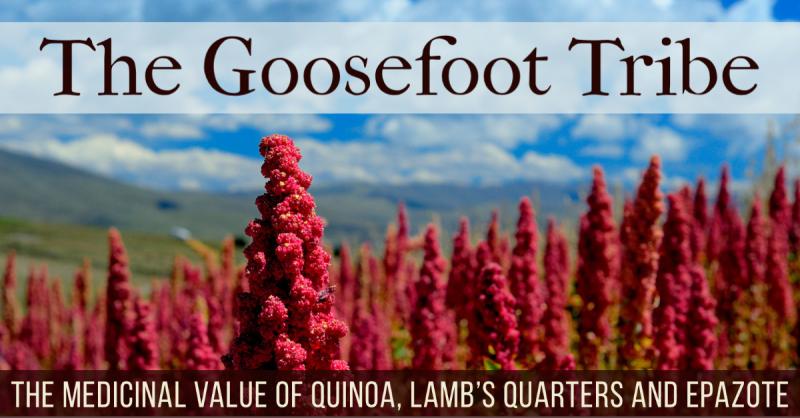
Every spring various weeds pop up in gardens, yards, roadsides, vacant lots, and fields. Sadly, many people only see these plants as a nuisance, never realizing that many of them are valuable foods and/or medicines. One of these weeds is Chenopodium album, commonly known as lamb’s quarters, pigweed, or white goosefoot. It’s one of several edible and/or medicinal plants in the Chenopodium genus, many of which are known as various goosefoots because their leaves have a shape similar to a goose's foot. If you’re not familiar with this group of plants I hope you’ll have a new appreciation for them after you’ve finished reading this article and keep an eye out for when they pop up in the spring in your yard or neighborhood.
Quinoa
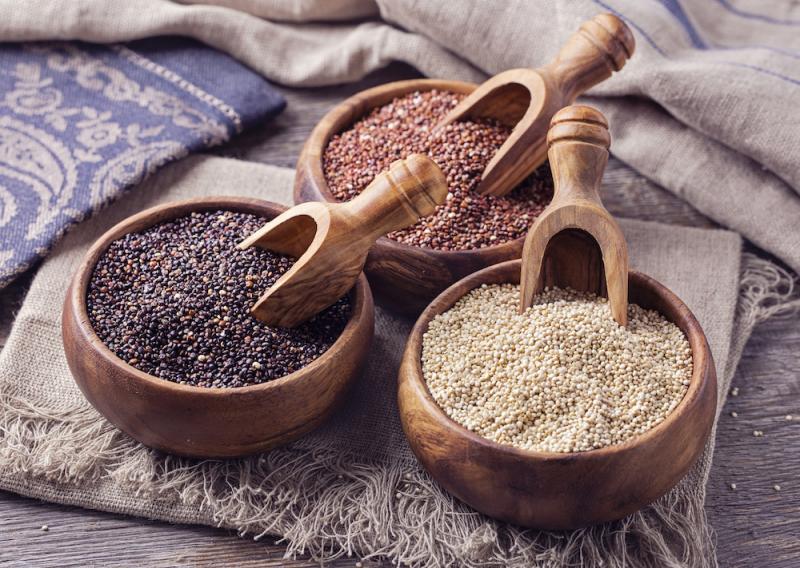 The most well-known plant in the Chenopodium genus is quinoa. It is a pseudo-grain, meaning it’s used like a grain, but isn’t technically a grain. True grains are seeds in the grass family, which include wheat, oats, rye, barley, rice, and corn. Pseudo-grains include quinoa, amaranth, and buckwheat. Although it’s been grown in the Andes as a food source, it’s only in recent years that this food has started to become popular, especially as a health food.
The most well-known plant in the Chenopodium genus is quinoa. It is a pseudo-grain, meaning it’s used like a grain, but isn’t technically a grain. True grains are seeds in the grass family, which include wheat, oats, rye, barley, rice, and corn. Pseudo-grains include quinoa, amaranth, and buckwheat. Although it’s been grown in the Andes as a food source, it’s only in recent years that this food has started to become popular, especially as a health food.
Quinoa is extremely nutritious, being loaded with vitamins, minerals, protein, and essential fatty acids. It’s also gluten-free. There are many varieties of it, with slightly varying nutritional content. The three most popular types of quinoa have red, black, or white seeds. White is the most commonly consumed, but the black and red varieties have more antioxidants, including more vitamin E.
If you’ve never tried quinoa, I suggest you get some and experiment with eating it. It can help reduce inflammation and balance blood sugar, and may also help to balance triglycerides and cholesterol. It's also a great food to use if you're sensitive to gluten.
Lamb’s Quarters
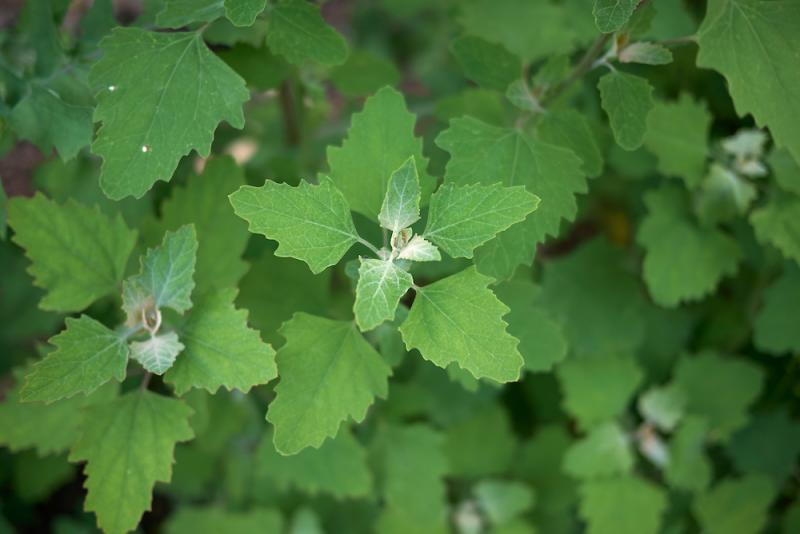 While you'll find quinoa seeds touted for their health benefits at the store you're more likely to find lamb's quarters growing as a weed. It’s pretty easy to identify the young plant (pictured left) from the shape of the leaves and their slightly white appearance, hence the other common name, white goosefoot, and the species name album meaning white. I’ve harvested the young greens and eaten them raw as part of a salad. They’re pretty good tasting and can be used very much like spinach in cooked foods.
While you'll find quinoa seeds touted for their health benefits at the store you're more likely to find lamb's quarters growing as a weed. It’s pretty easy to identify the young plant (pictured left) from the shape of the leaves and their slightly white appearance, hence the other common name, white goosefoot, and the species name album meaning white. I’ve harvested the young greens and eaten them raw as part of a salad. They’re pretty good tasting and can be used very much like spinach in cooked foods.
According to Foraging the Mountain West by Thomas J Elpel and Kriss Reed, the seeds are also edible. In fact, you could think of them as a kind of “wild quinoa.” You just have to find a good bunch of the plants and harvest the seeds by picking the tops and whacking them on the inside of a large bucket to knock them off the plant. Then, you can run them through a nylon screen to remove the undesired bits of the plant. You don’t have to winnow them (separate the seeds from the chaff) because the seed and the chaff are both edible.
I have to admit, I’ve never tried harvesting the seeds of lamb’s quarters. This is partly because I’ve never seen a large stand of the plants in seed, but mostly because it is a lot of work and I had a bad experience in my mid-teens. I had spent over an hour harvesting and winnowing shepherd’s purse seeds only to trip and spill the small cup I had collected into the gutter. I was so frustrated that I swore, using the f-word for the first time. Because of that experience, I've never tried to harvest small seeds for food again. Nevertheless, it’s good to know that I could do it in an emergency.
If you do try harvesting the seeds, don't grind them for flour. The seeds of lamb's quarters and other similar species contain a lot of saponins, which are bitter. And grinding them brings out the saponins and the bitterness. Apparently, if you just chew some and swallow them or cook them whole they’re not too bad.
Epazote
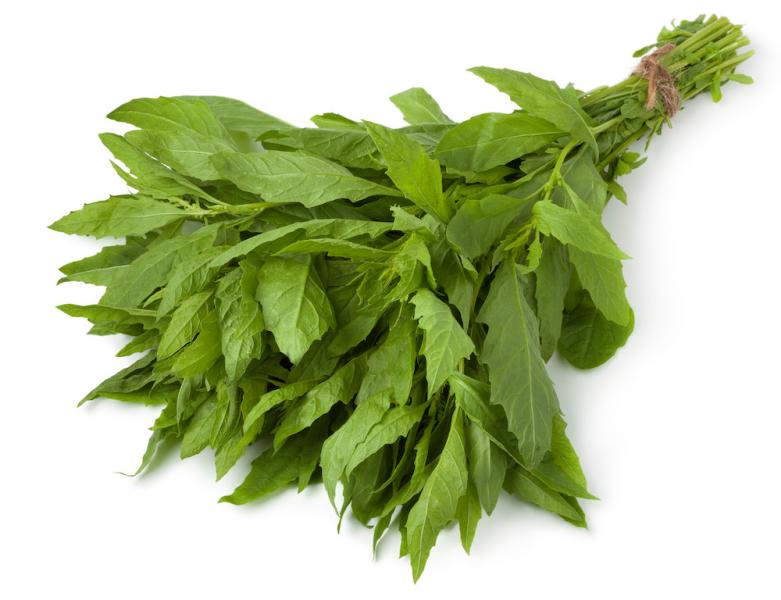 Another species, Chenopodium ambrosioides, also known as epazote or wormseed, has been used for food and medicine (pictured right). Epazote is added to bean dishes in Mexican cuisine, both to flavor the beans and also to reduce the gas and bloating they can cause. Interestingly, some native Americans used lamb’s quarters the same way. Epazote is also used to get rid of parasites, hence its other common name, wormseed.
Another species, Chenopodium ambrosioides, also known as epazote or wormseed, has been used for food and medicine (pictured right). Epazote is added to bean dishes in Mexican cuisine, both to flavor the beans and also to reduce the gas and bloating they can cause. Interestingly, some native Americans used lamb’s quarters the same way. Epazote is also used to get rid of parasites, hence its other common name, wormseed.
Michael Moore gives directions on how to use wormseed for parasites in Medicinal Plants of the Desert and Canyon West.
…here is the proper way to use Epazote for [roundworm] removal. Take a strong laxative in the evening (Cascara sagrada, senna, yellow dock), fast for 12 hours the next day, take two grams (4 #00 capsule) of ground seeds with a glass of mesquite or gum Arabic or a cold infusion of hollyhock or marshmallow, then wait two hours. Follow that up with a full dose of castor oil, then watch the little varmints come out.
Do not do this if you’re pregnant and don’t overuse the herb because it has been reported to have toxic effects in large doses. Epazote leaves can also be applied topically for fungal infections.
Other Goosefoots
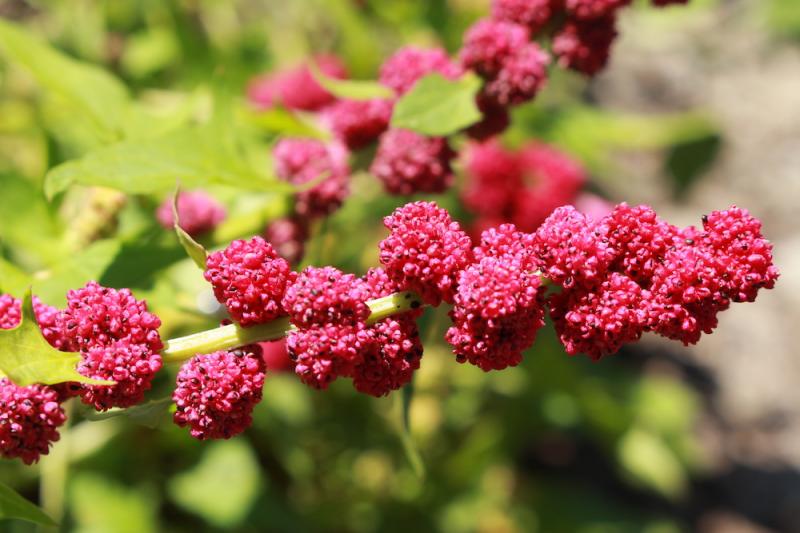 There are a lot of other species in the Chenopodium genus that are probably useful. In Native American Ethnobotany, Daniel E Moerman lists 14 other Chenopodium species used by native Americans for food and medicine. For example, it says that the leaves of many species, including lamb’s quarters, were used as poultices for burns. So, we still have a lot of untapped potential in these plants.
There are a lot of other species in the Chenopodium genus that are probably useful. In Native American Ethnobotany, Daniel E Moerman lists 14 other Chenopodium species used by native Americans for food and medicine. For example, it says that the leaves of many species, including lamb’s quarters, were used as poultices for burns. So, we still have a lot of untapped potential in these plants.
Two other goosefoots that were once classified in the Chenopodium genus, but are now in the Blitum genus, have also been used as food. They are strawberry blite, Blitum capitatum, and good King Henry, Blitum bonus-henricus. The seeds are both available for purchase and could easily be grown in a vegetable garden.
Strawberry blite (pictured left) is native to North America. The leaves have been used like spinach and the plant also produces some bland, but edible fruits. It needs to be consumed in moderation because the plant is high in oxalates.
Good King Henry is a European plant that was once widely grown as a vegetable. It’s now considered more of a weed. It has edible greens that are used like spinach and the shoots are eaten like asparagus (which gives it another common name, poor man’s asparagus).
In addition to their medicinal aspects and general value as edible plants these weeds have another purpose. Plants like these are annuals that typically start growing in the early spring. These young greens would have been relished by people who lived before the advent of modern shipping as some of the first plant foods they could harvest in the spring. And even though we can eat greens year round, we can still eat them as spring tonics to gently nourish and cleanse the body after winter.
Eating wild, seasonal foods that grow in your area is a good health practice, so if you’ve never done it, keep your eye out this spring for some lamb’s quarters or other edible goosefoots and try some. Who knows, like me, you might start picking and nibbling some of these edible weeds when you see them.
Steven's Articles
October
-

-
Understanding Caffeine & Cellular Adaptation
Preserving the power of caffeine's buzz and the…
September
-

-
Horseradish
A pungent spice for aiding protein metabolism…
-

-
Banaba or Crepe Myrtle
A beautiful tree from Southeast Asia whose leaves…
August
-

-
Monkeyflowers
Flower essences to help see ourselves more clearly…
-

-
Mariposa Lilies
Strengthening the bond between mother and child…
-

-
The Noble Bay Leaf
A common kitchen herb for aiding digestion and…
-

-
Epimedium: Horny Goat Weed
A circulatory stimulant and kidney yang tonic…
July
-

-
The Medicinal and Nutritional Benefits of Apricots
A nutritious fruit and valuable medicinal seed for coughs
-

-
Dogwoods
Asian dogwood is used to stop excessive discharge,…
June
-

-
Neem: The Village Pharmacy
A popular Ayurvedic remedy for dental and immune…
-

-
Spilanthes: The Toothache Plant
A traditional remedy for teeth and gums, as well…
-

-
Forsythia
An anti-inflammatory, fever-reducing, and infection fighting herb
May
-

-
Buckwheat (Kashi)
A delicious, high protein, gluten-free, gut-healthy food
-

-
Leaky Gut Syndrome
Plugging the leaks on the underlying cause of…
-

-
Storksbill
An edible, medicinal, weedy herb, helpful for…

